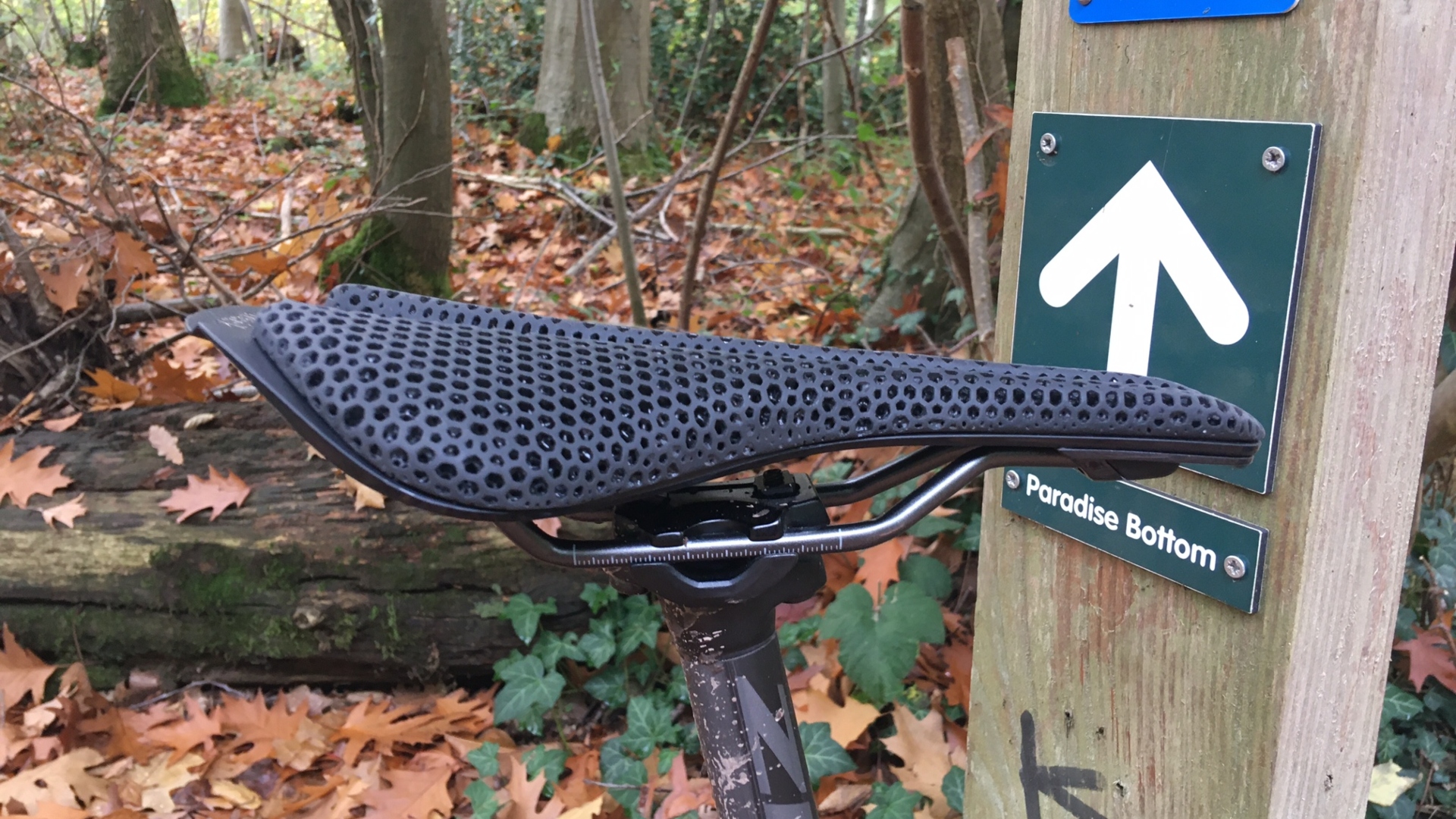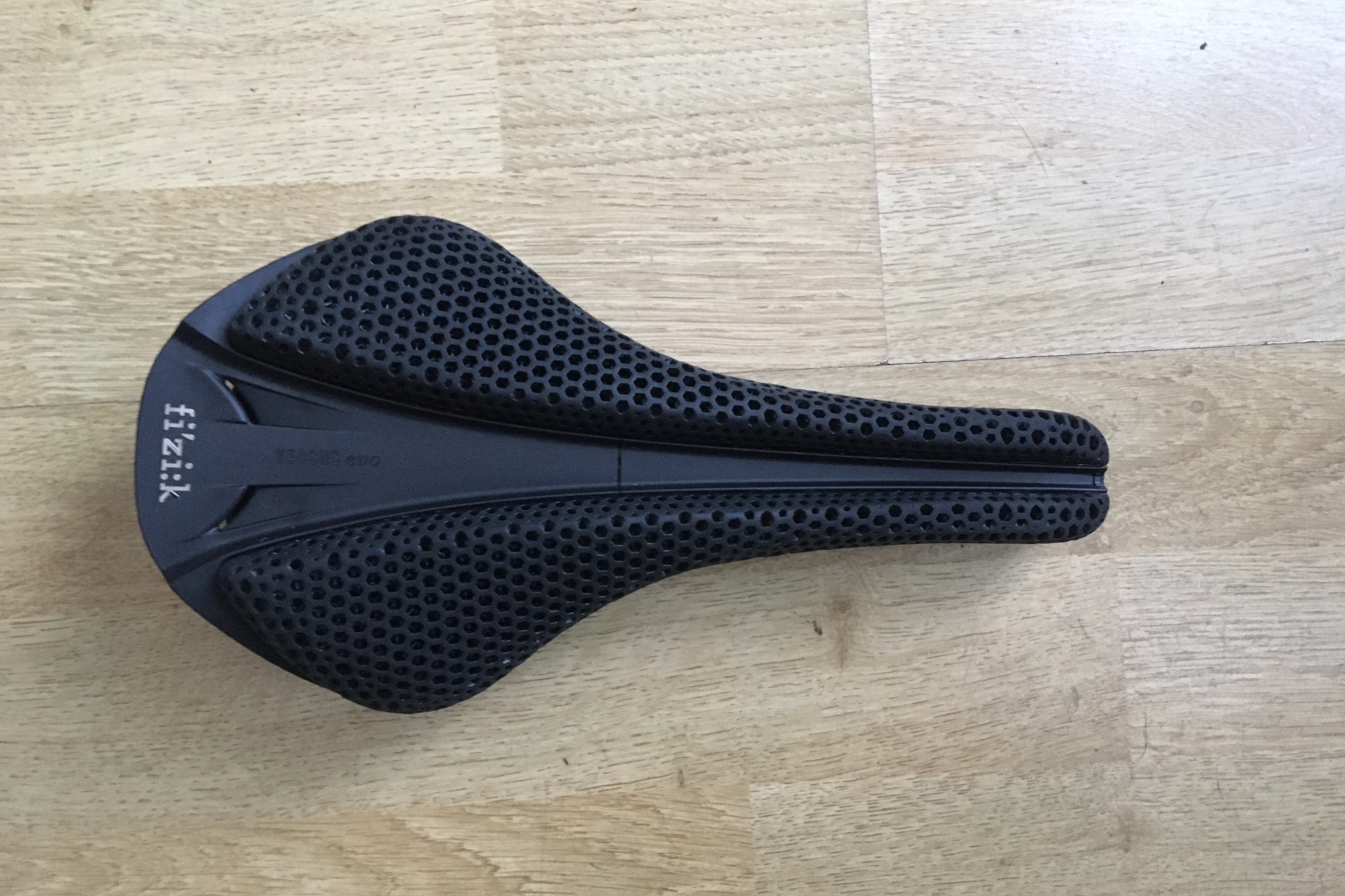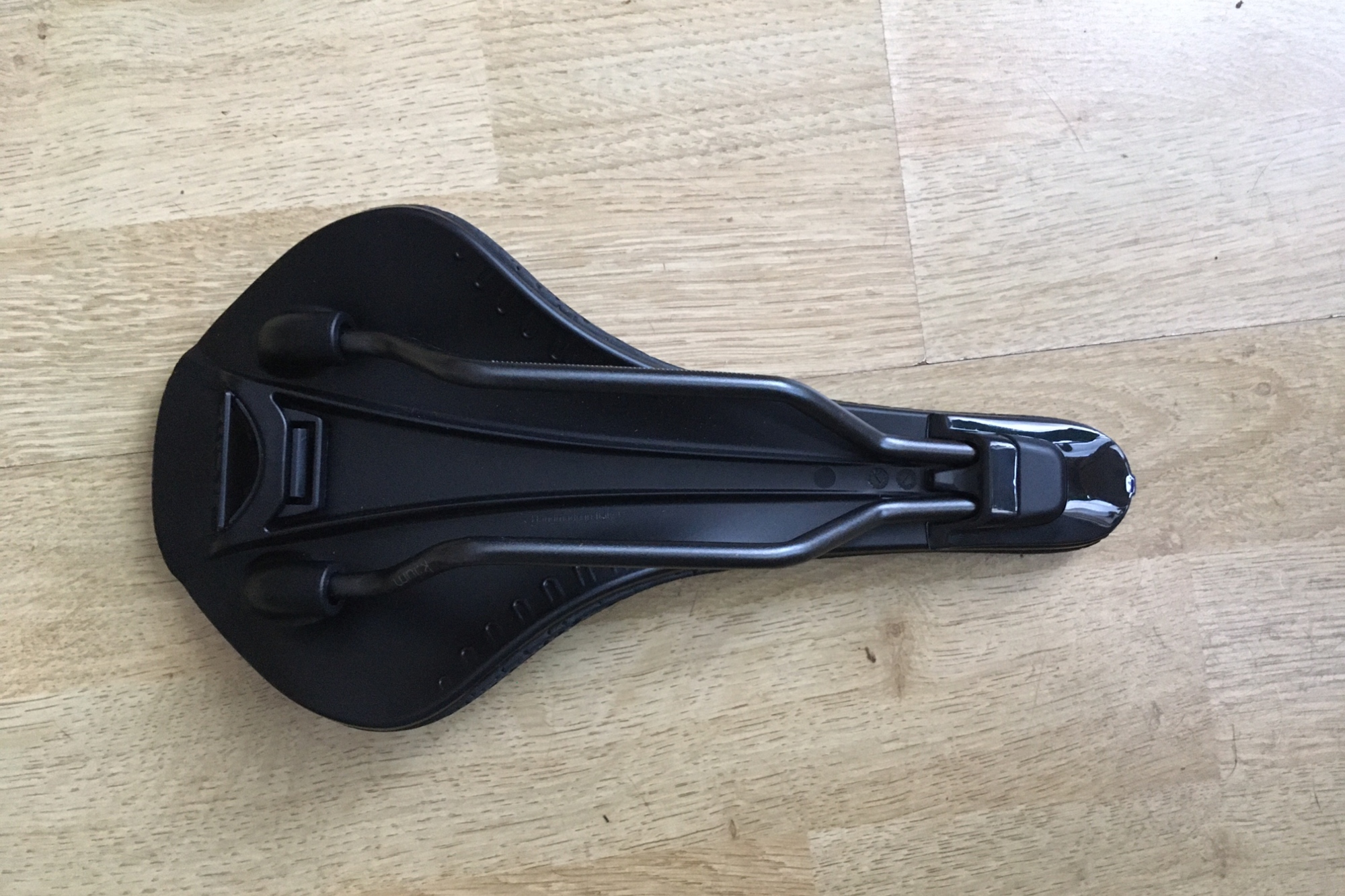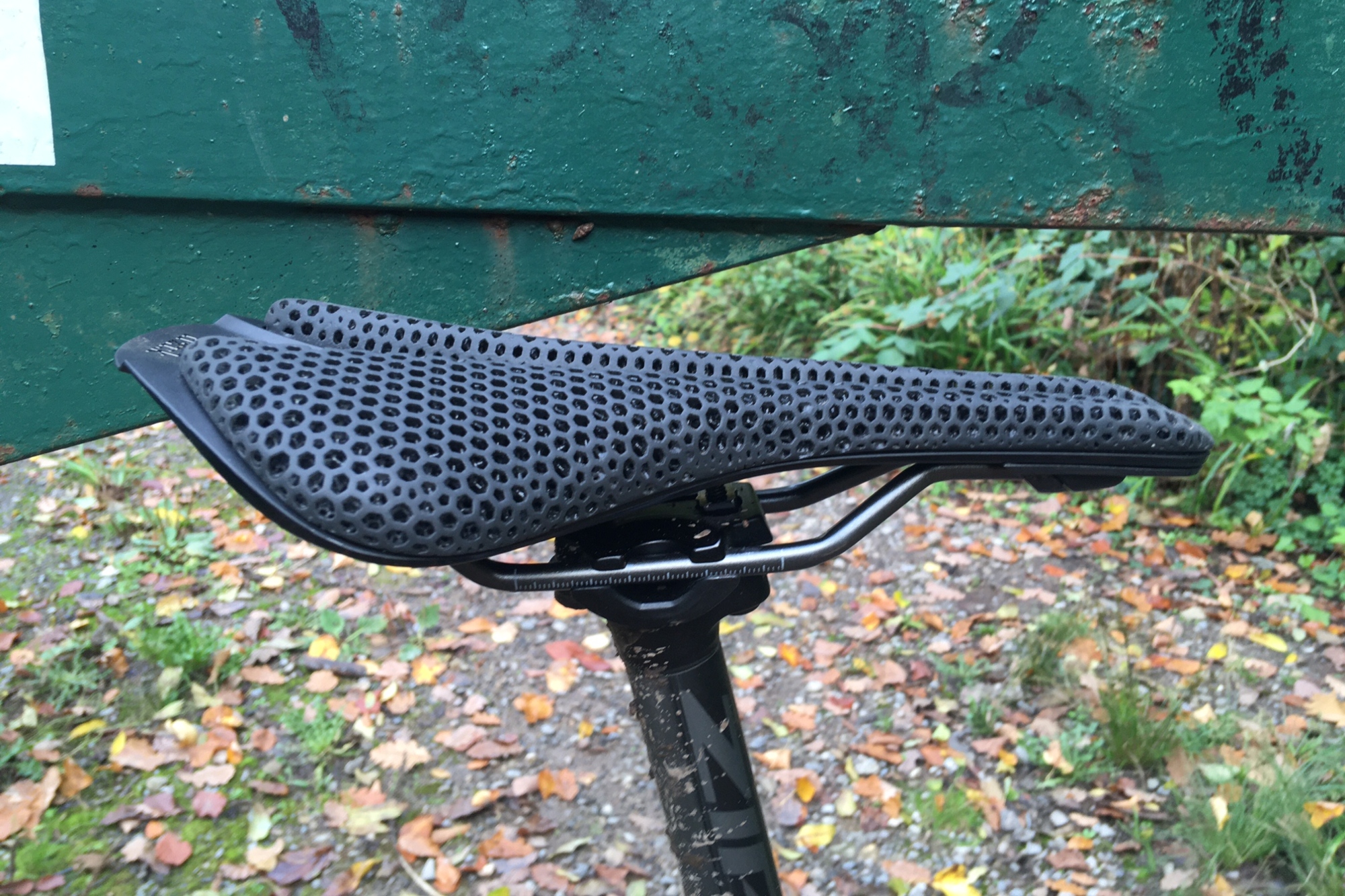Fizik Antares Versus Evo R3 Adaptive saddle - a high tech and comfy perch but requires deep pockets
Equipped with 3D printed adaptive technology and an effective pressure relief channel, the Antares is a saddle worthy of attention

The price of the Antares Versus Evo R3 adaptive saddle is unquestionably steep. It’s more than $100/ £100 more expensive than the regular Versus Evo model. So is it worth it? If you ride your bike regularly it’s hard to put a price on comfort. As cyclists we’re forever tinkering in the hope of finding a position or a product that aids this. For me, the Adaptive version of the Antares certainly did. It balances just the right amount of cushioning and flex to create a saddle that responds to your efforts and delivers bags of comfort even over long distances.
-
+
Comfortable padding that's also easy to clean
-
+
An effective relief channel that aids comfort
- +
-
-
Expensive - over $250/£250 at retail
You can trust Cycling Weekly.
Fizik has been making some of the most popular saddles for some time. A fixture in the pro peloton, they’re also the choice of mere mortals too and have been my favoured seat for more than a dozen years.
More recently the Italian brand has been producing some of its most recognisable shapes in 'Adaptive' versions, achieved through the use of 3D printing technology that allows for varying degrees of cushioning among other things. It a technique that is likely to become more commonplace among the best bike saddles.
Naturally this technology comes at a price, so I was keen to see if a saddle made using this wizardry, in this case the Antares Versus Evo R3, was worth the additional pennies.
Fizik Antares Versus Evo R3: construction

The Antares is a tried-and-tested shape and has been present in Fizik’s range for a long while. It’s designed for road riding and sits somewhere between the longer and flatter Arione and shorter and wider Argo in the line-up.
In the adaptive guise it’s offered in two widths, 139 and 149mm. I tested the narrower width, which measures 274mm in length and has a claimed weight of 217 grams, which was backed up by my kitchen scales.
The ‘Versus Evo’ refers to the relief channel that runs the full length of the saddle. Combined with a degree of flex, it’s designed to ease pressure on your ‘soft tissue’ areas. As for the ‘R3’, that means a carbon reinforced nylon shell paired with 7x7 Kium hollow rails.

I’ve owned an Antares Versus Evo non-adaptive saddle for a couple of years now and have been impressed with the degree of comfort, both of the saddle’s shape and the relief channel, particularly over longer distances.
The latest race content, interviews, features, reviews and expert buying guides, direct to your inbox!
But it’s the cushioning in this adaptive version that’s the headliner maker. Fizik employs what it calls its “revolutionary” Digital Light Synthesis technology. It’s a manufacturing process that uses a combination of digital ultraviolet light projection, oxygen permeable optics and programmable liquid resins to create the carbon padding that resembles black honeycomb.
This technology allows for the creation of what Fizik calls ‘zonal cushioning’. This translates to a saddle that’s softer in some areas and firmer in others, so it adapts to the individual rider's body, hence the name. It also apparently has the added benefit of far quicker production times and a material that’s easy to clean. So a win-win for both maker and rider.
Fizik Antares Versus Evo R3: the ride

The bicycle industry is wedded to change. It needs new products to replace old to keep the whole machine ticking over. Some of these changes are genuine advancements. A few might even be called revolutionary or ‘gamechangers’ in today’s parlance. But most are either subtle reworkings of existing technology or solutions to problems that never really existed.
If this makes me sound like I’m resistant to change, perhaps I am. However, I’d prefer to think that I just require some persuading. It’s happened before. I was wholly unconvinced that wider tyres on road bikes made much sense. I was pretty sure disc brakes belonged, and should stay, on mountain bikes. I’m now a believer in the merits of both, and happy that my dogmatism and ignorance was challenged.
All of which is a long-winded way of saying that I was skeptical about the need for adaptive saddles. Or rather I was unsure of why I’d choose to pay roughly twice the price of the regular Antares saddle, given that I was perfectly happy with the ‘original’.
And then I sat on it.

I’m loath to refer to the adaptive version as ‘instantly comfortable’ as it sounds a little ridiculous. Can anything, a pair of trousers, an armchair, or indeed a bike saddle, be immediately comfortable? Most objects designed to be so require a little wearing in, while irritations often remain undisclosed until later. But here I was, less than a mile into my first outing, feeling entirely at home.
Some of this was undoubtedly down to my familiarity with the Antares shape. But the adaptive cushioning was more comfortable, and this comfort was apparent from the get go. As first impressions go, it was quite something.
Fortunately, they also turned out to be lasting. The Fizik Antares Versus Evo adaptive saddle has remained a pleasure to sit on. On each and every ride it’s provided just the right balance of comfort and support, neither too spongy nor too firm. As anticipated the pressure channel performs just as well as it does on my other Antares saddles. I've even tried the saddle on my gravel bike and found that it's adaptive qualities extend to rougher terrain as well.
The claims of an easy to clean saddle have also proved true. I’ve yet to get it truly mucky, but dirt has been removed with a quick spray of water. Here the holes in the design proves to be a positive.
Finding the right saddle is a holy grail of sorts. After all it’s central to your position and comfort on the bike, and once found its best left in situ, with tinkering reserved for other components. But in this case I’m pleased I made the change, and happy to have been proved wrong once again.
Fizik Antares Versus Evo R3: Value
At $259.99 / £259.99 the Antares Adaptive saddle doesn’t come cheap. That said the R3 the most affordable in Fizik’s line up, with the R1 and R0 retailing at $299.99 / £299.99 and $399.99 / £399.99 respectively. For comparison the regular Antares R3 has a price tag of $149.99 / £144.99.
Specs
- Width: 139 mm
- Length: 274 mm
- Weight: 217 g
- Rail: 7x7 mm

Thank you for reading 20 articles this month* Join now for unlimited access
Enjoy your first month for just £1 / $1 / €1
*Read 5 free articles per month without a subscription

Join now for unlimited access
Try first month for just £1 / $1 / €1
Luke Friend has worked as a writer, editor and copywriter for over twenty five years. Across books, magazines and websites, he's covered a broad range of topics for a range of clients including Major League Baseball, Golf Digest, the National Trust and the NHS. He has an MA in Professional Writing from Falmouth University and is a qualified bicycle mechanic. He has been a cycling enthusiast from an early age, partly due to watching the Tour de France on TV. He's a keen follower of bike racing to this day as well as a regular road and gravel rider.